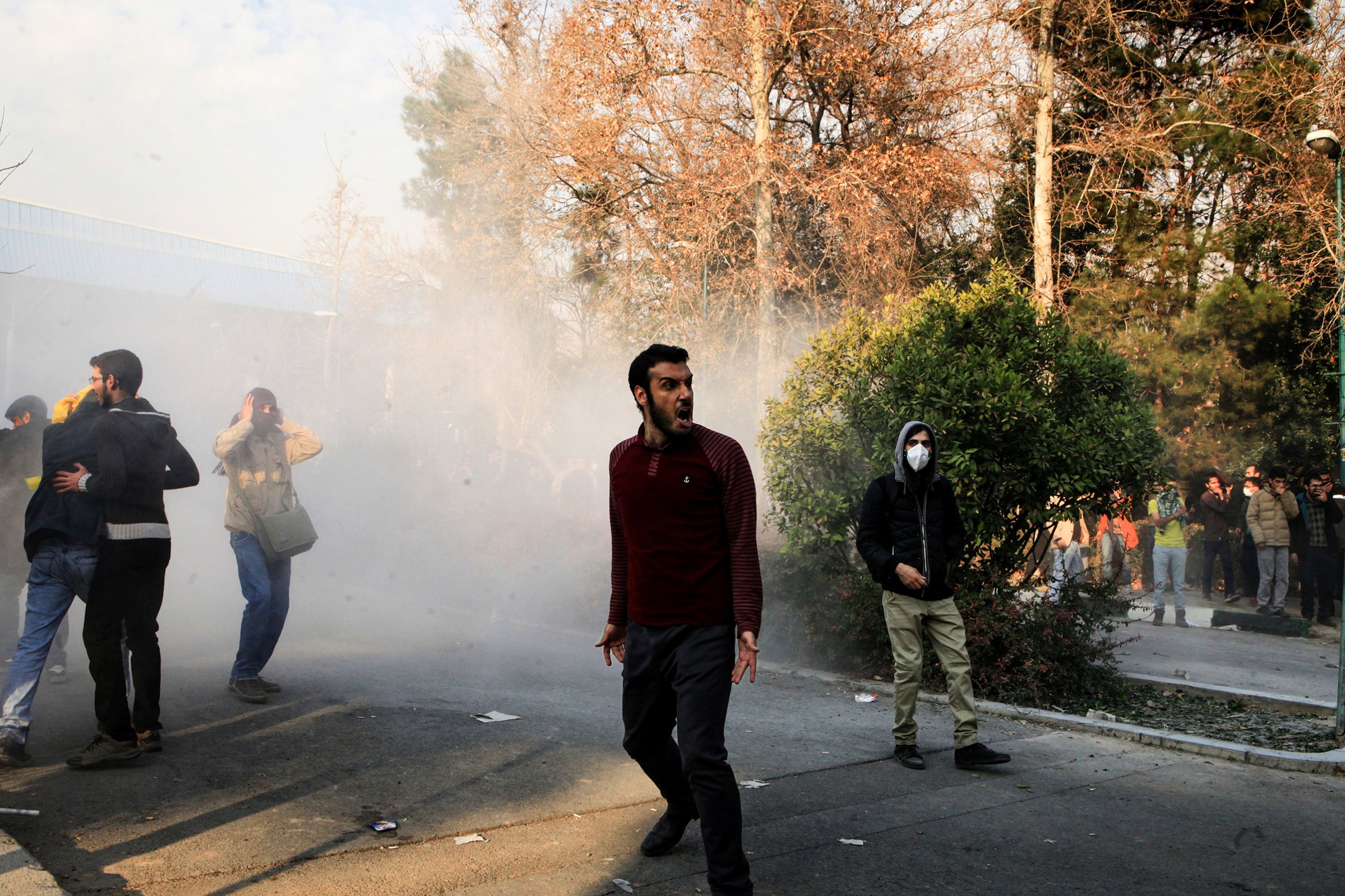
History is littered with the charred remains of fires lit for a discreet purpose, only to burn out of control. One may be immolating Iran now.
In the country’s 2017 presidential election, conservatives calculated that the best way to unseat moderate Hassan Rouhani was to point out to Iranians how poor they were. The idea was to sandbag Rouhani for failing to deliver the windfall that was expected when economic sanctions ended with the suspension of Iran’s nuclear program, a deal the President had championed for four years.
It turned out that Iranians measure their suffering in decades. In Iran, all hard times have their roots in a dysfunctional economy that has been in place since the 1979 Islamic revolution. The system benefits the country’s clerical elite and leaves ordinary people seething with the bitterness that has been pouring into the streets since Dec. 28.
The very first demonstration, in the northeastern shrine city of Mashhad, may have been arranged by hardliners intent on punishing Rouhani in his (handily won) second term. But subsequent uprisings appeared to spread organically, encouraged by social media and a feeling of nothing left to lose. “What we are seeing now is the result of a sort of distrust between the state and the people,” says Amir Mohebbian, a conservative political analyst in Tehran. “Politicians and statesmen, instead of trying to solve the problems of the populaces, are continually busy aggrandizing issues and blaming the other side for it.”
To the alarm of Iran’s ruling clerics, complaints about economic inequality were followed by calls for regime change. “You used Islam to make us poor” was the chant in one provincial capital. U.S. President Donald Trump gleefully egged on protesters, disregarding fears that U.S. foment might be used to justify a crackdown that by Jan. 3 had left at least 21 people dead.
Supreme Leader Ayatullah Ali Khamenei reliably laid the blame for the unrest with “enemies of Iran,” but also shrewdly invoked the specters of Syria and Libya, where popular uprisings in 2011 led to chaos and civil war. But Syria was already a topic in the streets as Iran’s heavy spending on regional conflicts was condemned. “Get out of Syria and take care of us,” marchers shouted.
Where the protests will lead is hard to determine. In the past, memories of the violent decade that followed the 1979 revolution has held back protests–as has the regime’s powerful internal security apparatus, which shut down the private-messaging service Telegram (after using it to warn Iranians). On the other hand, over 60% of Iranians were not alive in 1979, and many live in the hinterlands where prospects are especially dim.
The uprising that brought the regime to power began in a strikingly similar fashion. “The revolution of 1979 began with scattered protests in a shrine city by a relatively small number of protesters,” notes University of North Carolina sociologist Charles Kurzman, referring to Qum. “In weeks it spread to several other cities, and within a year had grown to a massive, largely peaceful uprising.” Kurzman’s 2004 book, The Unthinkable Revolution in Iran, charted the social dynamics of the revolt, which surprised even Iranians who took part in it. “Things can change overnight,” he said. “People’s assessment of both the costs and the benefits can change really dramatically when they think other people are getting involved.”
So far the new protests have been relatively small, but they have grown in number–at least 38 towns and cities saw demonstrations on Jan. 1 alone, an official told TIME–and possibly in intensity; in one city, state television said protesters had tried to take guns from police. In Tehran, a veteran activist paraphrased 2009 presidential candidate Mir-Hossein Mousavi, whose contested loss led to the huge demonstrations named for his campaign color. “The Green Movement was the last time anybody tried to bring about change in the Islamic Republic peacefully,” the activist said. “When peaceful demonstrations are viciously suppressed, it is only natural that they will be replaced by violent protests.” So far the regime has held back from scaling up its response. But when it does, few are expecting a jobs program.
–With reporting by KAY ARMIN SERJOIE/TEHRAN
More Must-Reads from TIME
- Donald Trump Is TIME's 2024 Person of the Year
- Why We Chose Trump as Person of the Year
- Is Intermittent Fasting Good or Bad for You?
- The 100 Must-Read Books of 2024
- The 20 Best Christmas TV Episodes
- Column: If Optimism Feels Ridiculous Now, Try Hope
- The Future of Climate Action Is Trade Policy
- Merle Bombardieri Is Helping People Make the Baby Decision
Contact us at letters@time.com